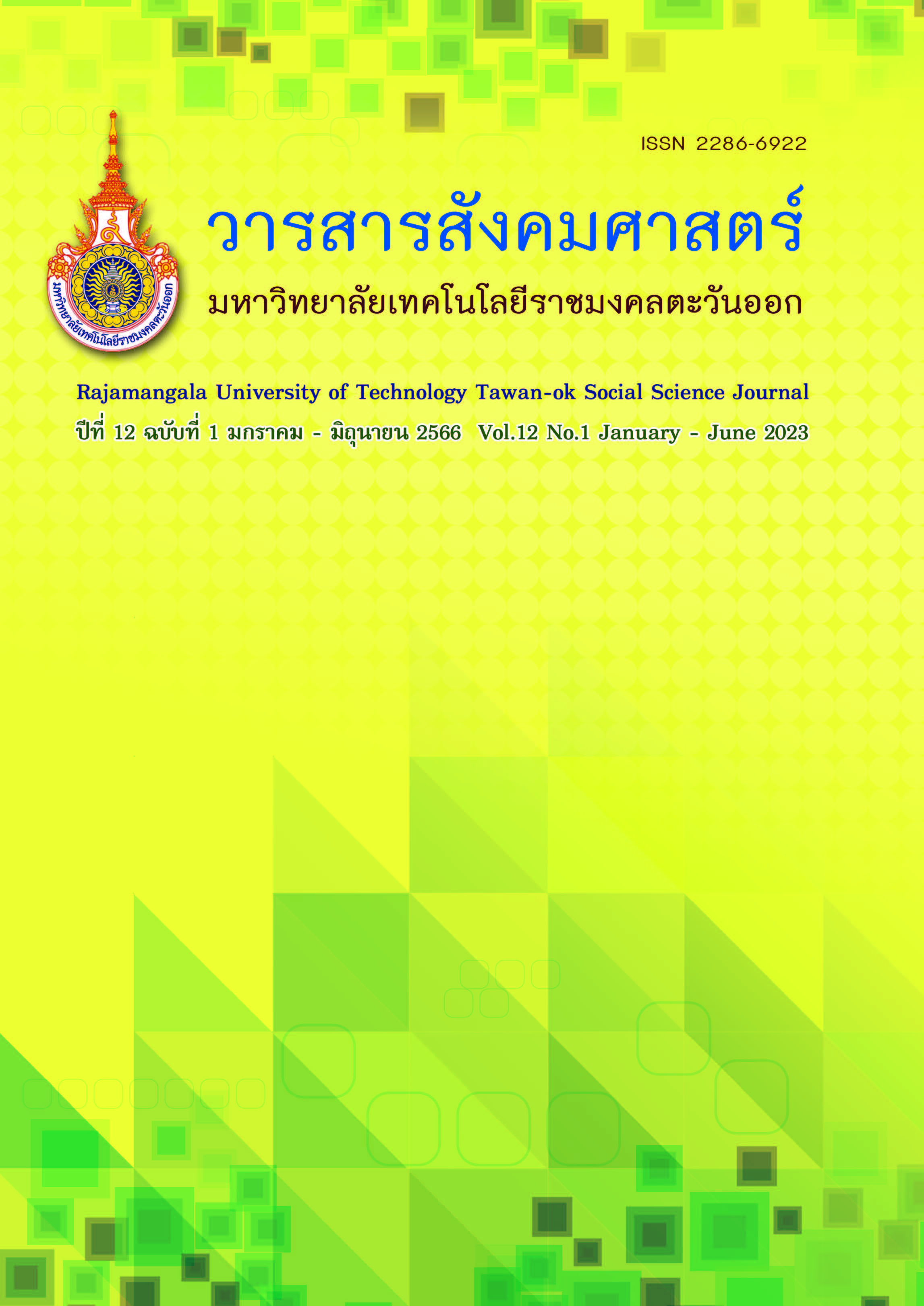Applications of Randomized Response Techniques to the Study of Sensitive Behaviors among Applies Statistics Students in Faculty of Science at Ubon Ratchathani Rajabhat University
Main Article Content
Abstract
The objective of the research on applications of randomized response techniques to the study of sensitive behaviors among applies statistics students in Faculty of Science at Ubon Ratchathani Rajabhat University is to estimate the proportion about sensitive behaviors by applications of randomized response techniques. The sample are 28 applies statistics students in Faculty of Science at Ubon Ratchathani Rajabhat University. The tool of this research is questionnaire of sensitive behaviors.
The results showed that there were sensitive behaviors: drinking alcohol (proportion 0.8571), exam fraud (proportion 0.7991), sex with fellow student (proportion 0.7232), money fraud (proportion 0.5759), smoking (proportion 0.4375), gambling (proportion 0.4241), stealing property (proportion 0.2813) and we found that the students had no sensitive behavior: watching porn (proportion 0.2723) and narcotic drug use (proportion 0.2009).
Article Details

This work is licensed under a Creative Commons Attribution-NonCommercial-NoDerivatives 4.0 International License.
References
ปิยดา ทองแจ่ม. 2547. เทคนิคการตอบสนองเชิงสุ่มของวอเนอร์ กรณีศึกษา : พฤติกรรมเชิงปกปิดของนักศึกษา. รายงานการศึกษาอิสระปริญญาวิทยาศาสตรมหาบัณฑิต สาขาวิชาสถิติประยุกต์ บัณฑิตวิทยาลัย มหาวิทยาลัยขอนแก่น.
พินิจ ลาภธนานนท์และคณะ. 2554. การศึกษาสถานการณ์ พฤติกรรมและผลกระทบการพนันในประเทศไทย. รายงานวิจัยฉบับสมบูรณ์โครงการการศึกษาสถานการณ์พฤติกรรมและผลกระทบการพนันในประเทศไทย ศูนย์ศึกษาปัญหาการพนัน. จุฬาลงกรณ์มหาวิทยาลัย.
ไพรัช อ้นอินทร์. 2552. พฤติกรรมการดื่มเครื่องดื่มแอลกอฮอล์ของวัยรุ่นที่ส่งผลกระทบต่อสุขภาพและครอบครัว. สำนักงานกองทุนสนับสนุนการสร้างเสริมสุขภาพ (สสส.) กรมสุขภาพจิต สถาบันวิจัยระบบสาธารณสุขและศูนย์วิจัยปัญหาสุรา.
ภาวิณี อยู่ประเสริฐ. 2540. ปัจจัยที่มีอิทธิพลต่อการใช้สารเสพติดของนักเรียนวัยรุ่นในกรุงเทพมหานคร. วิทยานิพนธ์ปริญญาสาธารณสุขศาสตรมหาบัณฑิต สาขาวิชาเอกพยาบาลสาธารณสุข บัณฑิตวิทยาลัย มหาวิทยาลัยมหิดล.
ศูนย์เครือข่ายวิชาการเพื่อสังเกตการณ์และวิจัยความสุขชุมชน มหาวิทยาลัยอัสสัมชัญ. 2553. พฤติกรรมและทัศนคติต่อการเล่นพนันฟุตบอลโลกปี 2553 กรณีศึกษาประชาชนอายุ 12-60 ปี ในเขตกรุงเทพมหานครและหัวเมืองใหญ่. กรุงเทพมหานคร.
สุดคนึง ณ ระนอง. 2552. การสำรวจพฤติกรรมเชิงปกปิดโดยใช้เทคนิคการตอบสนองเชิงสุ่ม. วารสารมหาวิทยาลัยเทคโนโลยีราชมงคลศรีวิชัย. 1(1): 45-54.
สุวรรณภา ปิ่นมณี. 2551. การปรับเปลี่ยนวิธีการประมาณค่าสัดส่วนของลักษณะเฉพาะเชิงปกปิด. วิทยานิพนธ์วิทยาศาสตรมหาบัณฑิต สาขาวิชาสถิติประยุกต์ บัณฑิตวิทยาลัย. มหาวิทยาลัยเชียงใหม่.
โสพิน หมูแก้ว. 2545. อยู่ก่อนแต่ง : การอยู่ร่วมกันโดยไม่ได้แต่งงานของนักศึกษามหาวิทยาลัย. วิทยานิพนธ์สังคมวิทยาและมนุษยศาสตรมหาบัณฑิต สาขาสังคมวิทยาและมนุษยศาสตร์ บัณฑิตวิทยาลัย มหาวิทยาลัยธรรมศาสตร์.
Assanangkornchai, S., Muekthong, A. and Intanont, T. 2009. Prevalence and patterns of alcohol consumption and health-risk behaviours among high-school students in Thailand. Alcohol Clin Exp Res. 33(12): 2037-2046.
Brener, N.D. and Collins, J.L. 1998. Co-occurrence of health-risk behaviors among adolescents in the
United States. J Adolesc Health. 22(3): 209-213.
Bouza, C.N., Carmelo, H.S. and Pasha, G.M. 2010. A Review of Randomized Responses Procedures: The
Qualitative Variable Case. Investigación Operacional. 31(3): 240-247.
Chantrapanichkul, P. and Chawanpaiboon, S. 2013. Adverse Pregnancy Outcomes in Cases Involving Extremely Young Maternal Age. International Journal of Gynecology & Obstetrics. 120(2): 160-164.
Elickson, P.L., McCarffrey, D.F., Ghosh-Dastidar, B. and Longshore, D.L. 2003. New inroads in Preventing
adolescent drug use : Results from a large-scale trial of Project ALEART in Middle schools. AM J Pub Health. 93: 1830-6.
Ellickson, P.L., Tucker, J.S. and Klein, D.J. 2001. High-risk behaviors associated with early smoking: results from a 5-year follow-up. J Adolesc Health. 28(6): 465-473.
Greenberg, B.G., Abul-Ela, A.A., Simmons, W.R. and Horvitz, D.G. 1969. The Unrelated Question Randomized
Response Model: Theoretical Framework. Journal of the American Statistical Association.
(326): 520-539.
Kanato, M. and Saranrittichai, K. 2005. Early experience of sexual intercourse a risk factor for cervical
cancer requiring specific intervention for teenagers. Asian Pacific journal of cancer prevention: APJCP. 7(1): 151-153.
Karam, E., Kypri, K. and Salamoun M. 2007. Alcohol use among college students: an international perspective. Curr Opin Psychiatry. 20(3): 213-221.
Krejcie, R.V. and Morgan D.W. 1970. Determining Sample Size for Research Activities. Psycholological Measurement. 30: 607-610.
National Institute on Alcohol Abuse and Alcoholism. 2006. Underage drinking. Alcohol Alert. 67: 1-8.
Saingam, D., Assanagkornchai, S. and Geater, A.F. 2012. Drinking-smoking status and health risk behaviors among high school students in Thailand. J. Drug Education. 42(2): 177-193.
Steinhausen, H.C., Boyadjieva, S., Griogoroiu-Serbanescu, M. and Neumärker, K.J. 2003. The outcome of adolescent eating disorders: findings from an international collaborative study. Eur Child Adolesc Psychiatry. 12(1): i91-8.
Tourangeau, R. and Yan, T. 2007. Sensitive questions in surveys. Psychological Bulletin. 133(5): 859–883.
Warner, S.L. 1965. Randomized Response : A Survey Technique for Eliminating Evasive Answer Bias. Journal of the American Statistical Associations. 60(309): 63-69


